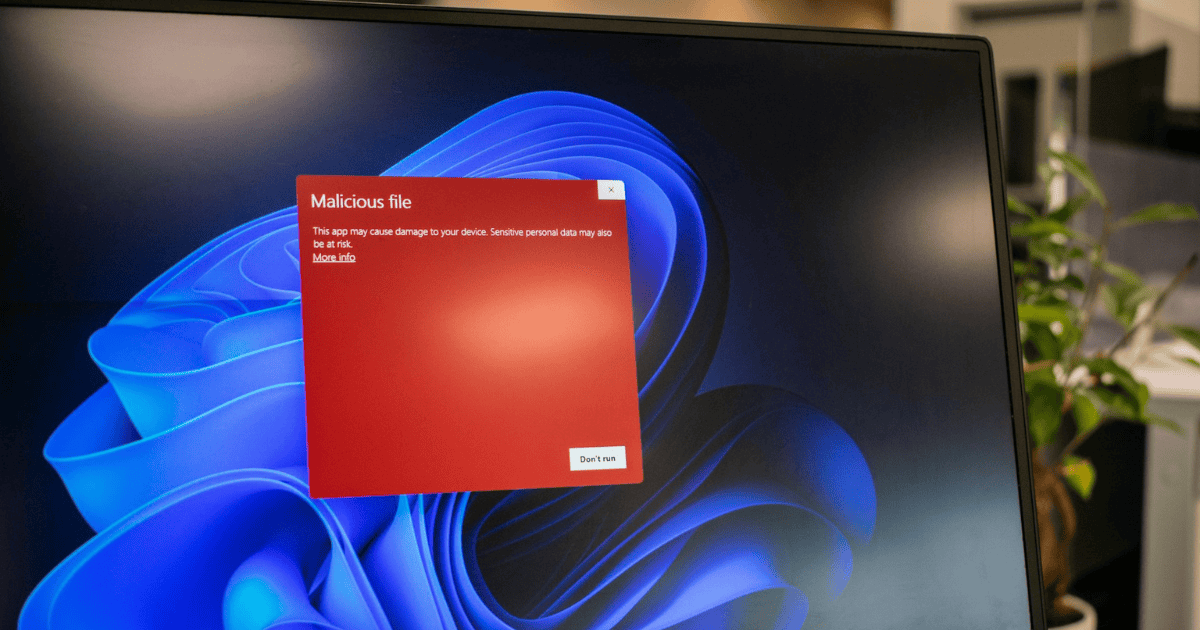Last Updated on 22 February 2024 by Marios Kyriacou
In today’s interconnected world, organizations face numerous threats from external attackers aiming to exploit vulnerabilities in their systems. Understanding how to prioritize risks in the external attack surface is crucial for mitigating potential vulnerabilities and safeguarding sensitive data.
In this comprehensive guide, we will delve into the key considerations and best practices to help you effectively prioritize and manage risks in your organization’s external attack surface.
What you’ll learn
Assessing the Expanding External Attack Surface
To begin the process of risk prioritization, it is essential to gain a clear understanding of your organization’s external attack surface. This refers to all the points where your digital infrastructure is exposed to potential threats from external sources.
Conducting a thorough assessment of your external attack surface will enable you to identify vulnerabilities, potential entry points, and areas of weakness that need immediate attention. Critically this is not a one-off exercise, your attack surface is evolving all the time so having the right tools to monitor your digital perimeter continuously is key.
External Assets Discovery
The first step in assessing the external attack surface is to identify all the assets that are publicly accessible or exposed to the internet. This includes web applications, network infrastructure, cloud services, and any other digital resources that could be targeted by malicious actors.
Utilizing automated tools and techniques, such as web crawlers and DNS enumeration, can aid in the asset discovery process and provide a comprehensive view of your organization’s external assets. Whilst using a range of tools is helpful it can still be a resource burden for a security team to manually manage this process. Running tools, reviewing results and compiling the data so it’s centralised takes time most teams don’t have.
Vulnerability Scanning
Once you have identified the external assets, the next step is to perform vulnerability scanning. This involves systematically assessing the security weaknesses and potential vulnerabilities present in the discovered assets.
Using specialized vulnerability scanning tools, you can identify available services, outdated software, misconfigurations, weak encryption protocols, and other common security issues that could be exploited by attackers.
Scanners are widely used as part of most modern security programs however without the attack surface discovery process you could have unknown assets not included in your scans. There are countless examples of attackers exploiting an unknown or unmanaged internet-facing asset. This highlights the importance of the asset discovery process and more crucially aligning discovery with your scanning tools.
Threat Intelligence Gathering
To gain insights into potential threats targeting your organization within your external attack surface, it is crucial to gather relevant threat intelligence. This involves monitoring and analyzing various sources such as security blogs, forums, and incident reports.
Alongside the resources outlined above, you can consider utilising a growing range of threat intelligence tools. By staying up to date with the latest trends and tactics employed by cybercriminals, you can better prioritize risks and allocate resources effectively.
Prioritizing Risks
Once you have assessed the external attack surface, the next step is to prioritize the identified risks. Prioritization helps you allocate resources efficiently, addressing the most critical vulnerabilities first. Here are some key factors to consider when prioritizing risks:
Impact Severity
Assess the potential impact of a successful attack on your organization. Consider factors such as financial losses, reputational damage, regulatory non-compliance, and disruption to critical business operations.
Assigning a severity rating to each identified risk based on its potential impact will enable you to focus on the most critical ones. Risk scoring, such as CVSS, assigns a numerical value to each identified risk based on factors such as the likelihood of exploitation, potential impact, and existing controls.
Exploitability
Exploitability refers to the vulnerability’s inherent capability to provide potential attackers with a clear pathway to accessing sensitive information. Carefully evaluate the ease with which a vulnerability can be exploited by attackers.
Consider factors such as the level of skill required, the availability of exploit tools in the wild, and the presence of public exploit code. Risks that are highly exploitable should be given higher priority for remediation to prevent potential breaches.
Asset Criticality
Review your asset inventory to decide which are your most business-critical assets. Any digital assets that are crucial components to run your business should be defined as having a high criticality.
Determine which assets are vital for your organization’s operations, contain sensitive data, or are part of critical infrastructure. Risks affecting highly critical assets should be prioritized to ensure their protection.
Exploitation Likelihood
Assess the likelihood of a risk being exploited based on historical data, threat intelligence, and contextual information. Risks that have a higher likelihood of occurrence should be prioritized to minimize the chances of a successful attack.
There is a range of models to help assess the likelihood that a vulnerability will be exploited. The Forum of Incident Response and Security Teams (FIRST) has developed The Exploit Prediction Scoring System (EPSS) which helps when assessing software vulnerabilities. Similarly, The Microsoft Exploitability Index has been developed for specific Microsoft software and services.
Risk Mitigation Strategies
After prioritizing risks in your external attack surface, it is crucial to implement effective risk mitigation strategies. Here are some recommended approaches to consider:
Patch Management
Patch management is a crucial process for maintaining the security and stability of an organization’s IT environment. To effectively handle patch management, there are several best practices that security and IT professionals should follow.
First, establishing a comprehensive patch management policy is essential. This policy should define the roles and responsibilities of the individuals involved, establish a clear process for identifying and prioritizing patches, and outline the schedule for patch deployment. It is important to maintain a centralized repository of patches and keep it up to date with the latest releases.
Secondly, implement a regular patching schedule to ensure that critical patches are applied promptly. This can be achieved by automating the patching process whenever possible. Additionally, prioritizing patches based on severity and impact is essential to address the most critical vulnerabilities first. Finally, thorough testing of patches is vital before deploying them to production environments to minimize any potential disruptions or compatibility issues.
Secure Configuration
Misconfigurations have led to a number of high-profile attacks and remain a significant vector for many organizations. According to the report by Tenable, approximately 800 million records were exposed in 2022 as a result of misconfiguration.
To combat this ensure that all external IT assets are configured securely following industry best practices. This includes implementing secure network configurations, using strong encryption protocols, and disabling unnecessary services or ports.
Web Application Security
Pay special attention to securing web applications, as they are a common target for attackers. In 2022, web app and API attacks increased by a staggering 128% year on year, which illustrates the importance of bolstering their security.
There are a range of security techniques that help to secure web apps and APIs. For the applications themselves implement measures such as input validation, access controls, and secure coding practices to mitigate common web application vulnerabilities.
Alongside this conduct regular penetration tests, Static Application Security Testing (SAST) and Dynamic Application Security Testing (DAST). Additionally, tools such as eXtended Detection and Response (XDR) and Web Application Firewalls (WAF) help to detect and deflect threats.
Access Control
Access control plays a crucial role in safeguarding data by determining the individuals permitted to access and utilize company information and resources. By implementing authentication and authorization, access control policies verify the identity of users and ensure they possess suitable access rights to company data.
Implement robust access control mechanisms to restrict unauthorized access to external assets. This includes enforcing the principle of least privilege, implementing multi-factor authentication, and regularly reviewing user access privileges.
Incident Response Planning
An incident response plan is a collection of instructions designed to assist IT personnel in identifying, responding to, and recovering from network security incidents. Such plans specifically address concerns such as cybercrime, data loss, and service outages that pose a risk to daily operations.
Develop a comprehensive incident response plan that outlines the steps to be taken in the event of a security breach. This should include procedures for incident detection, containment, eradication, and recovery. Regularly test and update the plan to ensure its effectiveness.
Final Thoughts
Effectively prioritizing risks in the external attack surface is a critical aspect of a robust cybersecurity strategy. By assessing the external assets, prioritizing risks based on impact and exploitability, and implementing appropriate risk mitigation strategies, organizations can enhance their security posture and protect valuable assets from malicious actors.
External attack surface management tools are gaining widespread adoption within security stacks. Their ability to automate and centralize asset inventory, assign asset criticality and prioritize vulnerability findings help significantly reduce manual tasks.
It is essential that attack surface management is continuous and not conducted as a one-off assessment. Accepting that your attack surface changes and evolves and dealing with it proactively will move you towards a stronger security position.
Frequently Asked Questions
What is the importance of prioritizing risks in the external attack surface?
Prioritizing risks in the external attack surface is crucial because it allows organizations to allocate their resources effectively and focus on the most critical vulnerabilities. By addressing high-risk vulnerabilities first, organizations can minimize the likelihood of successful attacks and mitigate potential damage to their systems and sensitive data.
How often should organizations prioritize risks in the external attack surface?
Risk prioritization should be an ongoing process. As the threat landscape evolves, new vulnerabilities may emerge, requiring organizations to reassess and reprioritize their risks. Additionally, changes in the organization’s infrastructure, systems, or third-party connections may impact the attack surface, necessitating regular risk prioritization exercises.
Can risk prioritization eliminate all security risks?
While risk prioritization is essential for effective risk management, it cannot eliminate all security risks entirely. However, by prioritizing and addressing the most critical risks, organizations can significantly reduce the likelihood and impact of successful attacks. A comprehensive and layered security approach is necessary to mitigate the remaining risks.
What are some common challenges in prioritizing risks in the external attack surface?
Some common challenges in prioritizing risks in the external attack surface include limited resources, competing priorities, and a rapidly evolving threat landscape. Organizations must balance the available resources and prioritize risks based on their potential impact and likelihood of exploitation. Regular reassessment and adjustment of risk prioritization strategies are necessary to address these challenges effectively.





